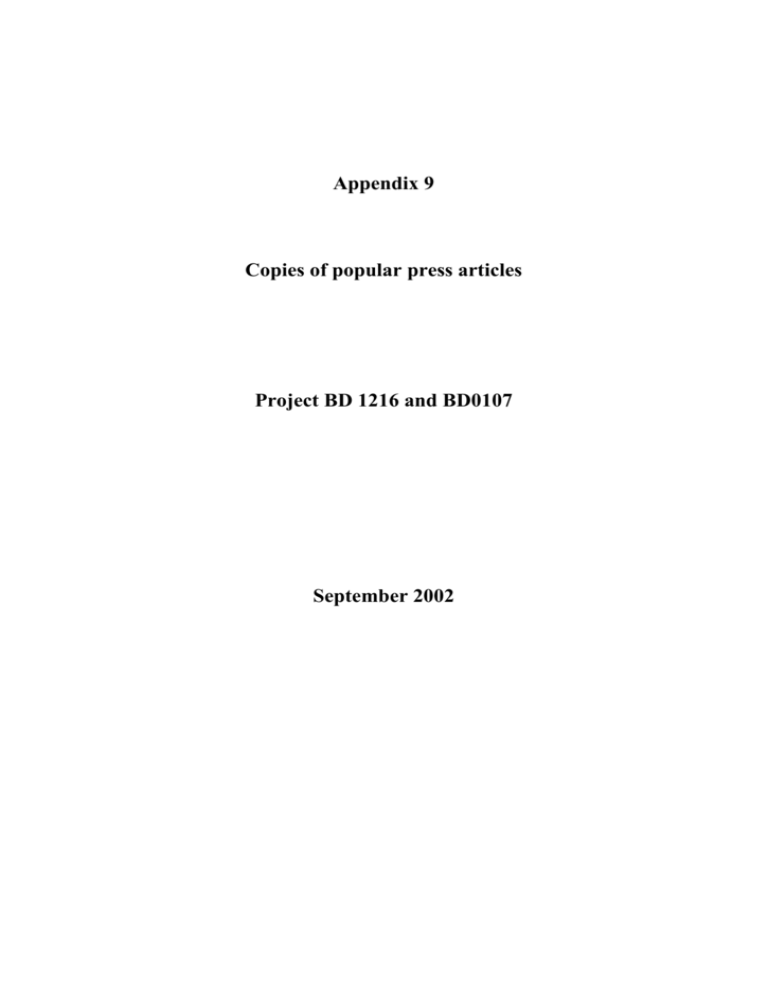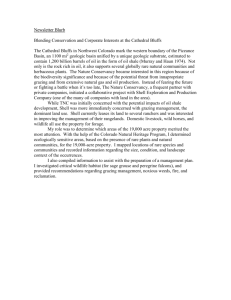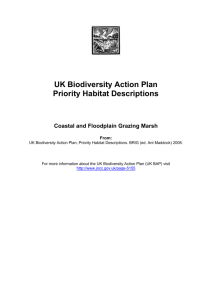Feeding blocks to manage sheep on upland moor
advertisement

Appendix 9 Copies of popular press articles Project BD 1216 and BD0107 September 2002 Rumevite Blocks Help Manage Environmental Schemes 24 hour Rumevite blocks are a highly convenient and versatile feeding option for sheep producers aiming to take advantage of the various environmental conservation schemes run in England, Wales and Scotland. Black faced hill ewes That’s the view of ADAS researcher Owen Davies who says block feeding offers farmers one way of overcoming some of the restrictions inherent in ESA and other conservation schemes. "Environmental scheme restrictions generally close off the normal grazing management regimes available to other livestock producers. Fertiliser and fencing restrictions are too good examples," he says. "With fertiliser restrictions in particular, farmers lose the flexibility to apply fertiliser strategically when they need extra grass. For example, having to wait for clover to fix nitrogen rather than applying nitrogen yourself means early bite will be delayed. Or if you get a prolonged drought and you’re short of grass for winter conservation, you can’t apply fertiliser when you ideally want to. This means you need other ways of reducing grazing pressure and supplementary feed options. Feed blocks offer an ideal solution and help you bring flexibility back into your production system." Owen says environmental scheme fencing restrictions can also pose grazing pressure challenges. "Where scheme restrictions are designed to produce visually-appealing, wilderness areas with minimal fencing, sheep producers need to find other ways of managing grazing areas. Rotating feed block sites offers you another way of shepherding to better manage your grazing areas," he says. Rumevite Proven in trials - Again! Introduction ADAS trials are demonstrating the benefits of Rumevite for upland and lowland sheep systems. From satellite tracking data illustrating the ability of blocks to costeffectively manage upland grazing, to studies showing a feed block system offers lowland producers a viable but simpler pre-lambing feeding alternative to concentrates - Rumevite offers outstanding value. Upland Success Owen Davies and Dr Sarah Hetherington moving Rumevite Original feed blocks Satellite-tracking of sheep grazing behaviour has demonstrated the value of Rumevite feed blocks in drawing upland ewes to less attractive vegetation in Environmentally Sensitive Areas (ESA). A four-year MAFF-funded study at ADAS Pwllpeiran in Wales has examined sheep ranging behaviour after Rumevite feed blocks were strategically placed in underutilised areas of a heather-dominant mountain pasture. Visual observations of grazing behaviour were supported by data from satellite global positioning technology (GPS). According to ADAS researcher Owen Davies, grazing time spent in heatherdominant areas was increased by 14% when feed blocks were present and there was a significant rise in sheep density within 25 metres of a feed block site. As a result, heather utilisation was increased significantly. "In the first year, grazing of the surrounding heather increased by 15% when feed blocks were sited in an area, but interestingly feed block consumption was relatively small (140g-200g per ewe per day)," he points out. "This increase in heather grazing will not only prevent heather becoming rank and unpalatable, but will also help prevent over-grazing of the preferred grassy banks." Owen Davies says the study has demonstrated a relatively inexpensive but effective, practical alternative to traditional shepherding of semi-natural rough grazing. "Even the lower stocking rates associated with environmental prescriptions for seminatural rough grazing are not enough to prevent over-grazing of favoured areas," he stresses. "With no supplementary feeding, ewes will range in search of palatable grasses at the expense of less attractive heather. But by using self-help blocks (even at low stocking rates) flock managers can achieve a significant increase in rough grazing utilisation within a 25 metre radius of the blocks."






